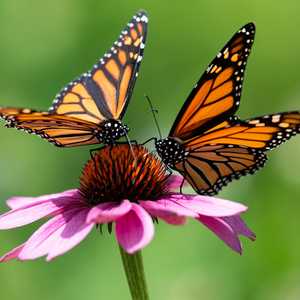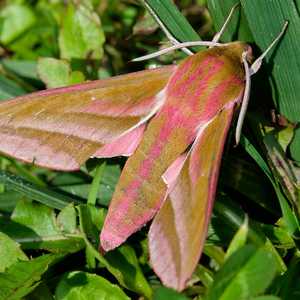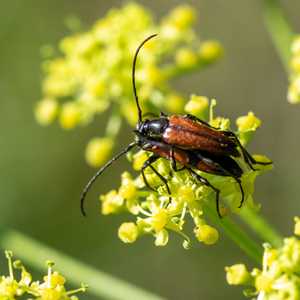The Invisible Problem by Katherine Crouch
In mid-September, early one morning, I drove from Somerset to the Malvern Hills to see a client for a garden consultation and drove home again in the afternoon. It was a still and sunny perfect late-summer day, with a round trip of 240 miles.
When I got home, I observed the windscreen had no bugs on it. Not one, and I hadn’t used the windscreen washer since setting off from home. When I was a child, we would amuse ourselves on long car journeys by speculating which particular bug had met a sudden and occasionally colourful end on the screen. My father would mutter oaths under his breath as he cleaned and scraped the glass after the trip, as the adhesive qualities of some unknown species was impressive.
There is a great decline in the insect population following a century or more of agricultural practices involving indiscriminately spraying DDT and other poisons to kill crop pests. Rachel Carson wrote Silent Spring in 1962, arguing against the practise, stating that pesticides should be renamed biocides as they killed beneficial insects as well as insects that damage crops.
This sparked the beginning of the modern environmental movement and it has taken nearly 60 more controversial years to ban DDT, organonchlorines, organophospates and other chemicals, at least in the UK, while the attitude of the agrichemical industry has been more or less, “nah, it’s fine, a little bit doesn’t do any harm”.
Thanks to the lobbying of a few people the majority of the population have finally grasped that spraying everything is A Bad Idea and we need to do something about the insect population before plant reproduction ceased, along with the rest of life on earth.
Us gardeners can do a great deal to help, by filling our gardens with kinds of plants to feed bees, pollinators and all the other beneficial insects. For a full list of suitable plants, download this list from the RHS.
I heartily deplore the modern fashion for some people to cover their entire garden in fake grass, gravel, porcelain, stone and composite decking. I understand that time flies and many people simply don’t have time to garden – but they will still have to scrub and sweep and paint fences and such gardens show every mark. You retain an element of dismal repetitive maintenance, while you have created a barren environment and eliminated all the joy of a garden, with no wind through the grasses, no birds in the trees, no ripe fruit to taste, and no scent in the air.
In such a space (I can’t call it a garden if there are no plants) I would make a plea for a single rowan or crab apple tree, for sitting in dappled shade is so pleasant on a hot day. You will have somewhere to hang some bird feeders, the insects will enjoy the flowers and the birds will eat the berries. There will be less mess on the lawn from the autumn leaves than the mess in the average teenager’s bedroom, so it is hardly a cause for stress.
The crabs and rowans belong to the Rosaceae family of plants, all with 5 equal size petals. It includes many of the fruit crops that grow especially well in Somerset. Mostly pollinated by bees, pome fruit such as apples, pears and quince would fail. It is such a shame that in a year that promises to be a bumper year for good quality cider apples, many will rot on the ground, as the demand from the pubs has fallen due to Covid 19.
Puddings in summer would be dull without raspberries and strawberries. The almond crop in California is in great demand due to the rising popularity of almond milk, and to be pollinated by bees, they are taken to the orchards in mobile hives. Not only does this stress the bees but they fall sick because of herbicide use to keep down the weeds in the orchards. Organic almond production without herbicides is a tiny proportion of the Californian crop, and hopefully it will expand.
The Rosaceae drupe fruits of plums, cherries, and peaches need bees. We need to help peaches get pollinated in Britain. They originate in hotter climates than ours and the South West is about the most northerly latitude you can grow a peach outdoors, and not that reliably. They flower in late February and it is still too cold for our bees to be up and about in great numbers, so you must imitate the bee and pollinate the flowers with a blusher brush.
Our ornamental gardens would be the poorer without roses, amelanchiers, hawthorns, cotoneaster, potentillas, and geums. For a full list of the species in the family of Rosaceae, look up http://www.theplantlist.org/browse/A/Rosaceae/
Rosaceae is one family of plants at risk from poor insect health. There are 437 families of flowering plants. To help just this one, plant an apple tree this autumn and drink local cider.
With many thanks to Katherine Crouch
Katherine Crouch Garden Design
Telephone
Mobile
Posted on October 20th 2020





